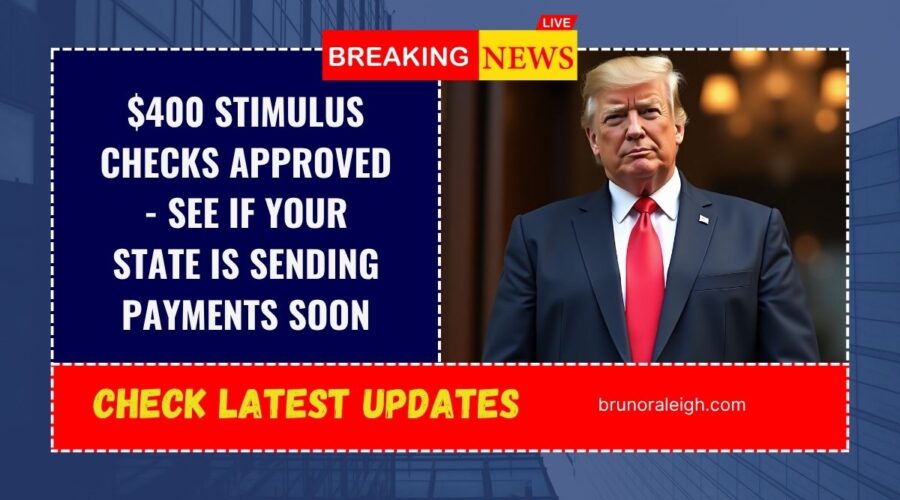$400 Stimulus Checks Approved – See If Your State Is Sending Payments Soon
As inflation continues to stretch household budgets in 2025, multiple U.S. states have moved forward with $400 stimulus checks to provide financial relief to eligible residents.
These payments are designed to help low- and middle-income earners manage rising living costs and are part of broader state-level economic support initiatives.
Let’s break down the details by state, eligibility rules, payment timelines, and what you can expect if you’re among the 2025 recipients.
Why Are States Issuing $400 Stimulus Payments?
Several states have budget surpluses or relief funds remaining from previous federal distributions. Rather than letting these funds sit unused, states are distributing one-time stimulus checks worth up to $400 to residents who meet specific income or filing criteria.
These payments are separate from federal-level checks and are issued directly by individual state governments.
States Sending Out $400 (or Similar) Stimulus Payments
| State | Payment Amount | Eligibility Highlights | Payment Schedule |
|---|---|---|---|
| New York | Up to $400 | Income below $300,000 (joint); must have filed taxes | Starting October 2025 |
| Georgia | Up to $500 | Filed 2023 & 2024 tax returns; must owe state taxes | By end of October 2025 |
| New Mexico | $500 / $1,000 | Filed 2024 return; residency-based | Payments ongoing |
| Arizona | $250 per child | Dependent-based stimulus; income thresholds apply | Rolling payouts |
| Pennsylvania | Up to $1,000 | Renters, low-income seniors & disabled individuals | Approved and in process |
Who Is Eligible for These $400 Stimulus Checks?
Each state has different criteria, but general eligibility includes:
- Filing state taxes for the 2023 or 2024 tax year.
- Residency in the state during the qualifying year.
- Income limits that prioritize middle- and low-income earners.
- Not being claimed as a dependent (in most states).
Some states, like Georgia and New York, are basing the $400 figure on joint filings, while others prorate based on filing status or the number of dependents.
How Will the Payments Be Sent?
Most states are delivering payments via:
- Direct deposit to bank accounts on file with the Department of Revenue.
- Paper checks for individuals without electronic filing details.
- No application is required for most residents — just ensure your address and tax filings are up to date.
What You Should Do Now
- Review your 2023 and 2024 state tax return status.
- Update your address or direct deposit details with your state’s Department of Revenue.
- Watch your mailbox or bank account in the coming weeks if you qualify.
The approval of $400 stimulus checks in multiple states offers timely financial help for millions of Americans in 2025. With inflation still affecting essentials like groceries, gas, and rent, these one-time payments are a welcome relief.
If you live in a participating state, ensure your information is current, and stay alert for notifications regarding your eligibility and payment status.
FAQs
Can I receive more than one $400 payment if I live in multiple states?
No. You must be a legal resident of the state issuing the payment and typically have filed taxes there to be eligible.
Will I be taxed on the $400 stimulus check?
In most cases, these state-issued payments are not considered taxable income, but it may vary by state tax law.
What if I moved after filing taxes — will I still get the payment?
Yes, as long as you update your mailing address or direct deposit info with the state tax office.


Leave a Reply